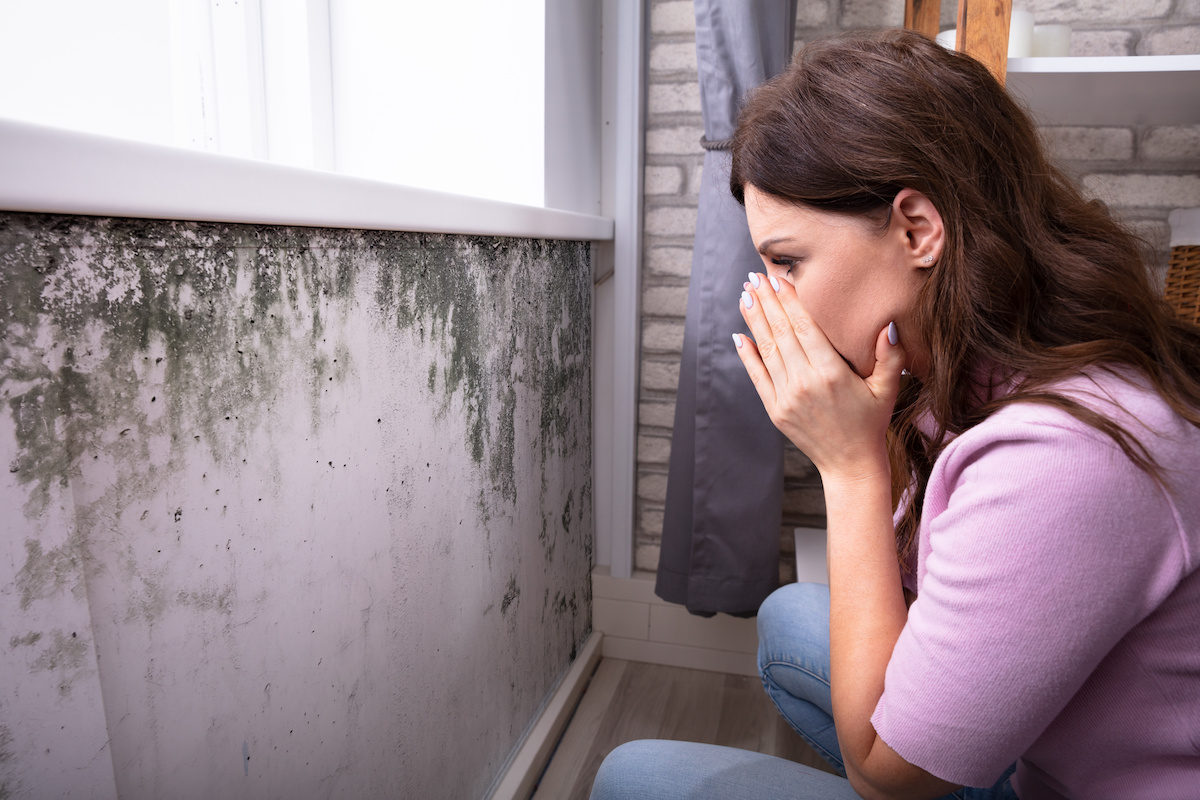Lack of waterproofing or use of low-quality materials for moisture protection during the construction or renovation of a house always leads to negative consequences. When the humidity level increases to 60-80% or more, mold appears on the walls, which, without taking measures, quickly develops, spoils the finish, and worsens the microclimate. Colonies of microorganisms also negatively affect human health, leading to the development of allergies and other diseases.
Walls become covered with mold as a result of lack of heating, and ventilation, violation of bricklaying technology, improper installation of slabs, and leaky installation of windows. Such phenomena can be prevented through prevention and timely control using modern means.
How to detect mold and mildew?
Mold is a type of fungus that actively reproduces in a humid environment. At the initial stage, you can assume the development of these microorganisms by an unpleasant damp smell. Over time, characteristic dark spots appear in corners and other places.
To detect mold colonies in an apartment, you should carefully check the places of its possible localization:
- wet areas – bathroom, toilet, kitchen, areas under the sink, in the toilet area, shower stall;
- shower curtains that are exposed to water daily;
- ceiling areas in the area of possible roof leakage;
- under wallpaper and on the floor – under linoleum or tiles that have come off;
- ventilation holes – due to temperature changes, condensation is constantly present in them.
It is also recommended to use a special test filter, which can detect the concentration of harmful fungal spores in the air or hard-to-reach places.
How to fight mold?
First, you need to accurately determine the causes of the fungus. You may need to find and fix a leak in the roof, insulate the slopes, or provide ventilation for the premises. After eliminating the cause, you can begin to remove plaque from the walls and ceiling.
For this, use folk and professional remedies. To achieve a lasting result, it is best to use proven antiseptic compounds.
How to treat walls against fungus and mold?
The water-based antiseptic composition “Tiprom A” has shown high efficiency in the fight against microorganisms. It is suitable for treating concrete, brick, stone surfaces, and wood. Depending on the type of building material, the product penetrates to a depth of 0.5 to 5.0 mm.
It does not contain heavy metal salts or other toxic components, so “Tiprom A” is suitable for treating internal and external surfaces. You can buy it from the company “Blue Sky Inspections”.
The use of water repellents after the antiseptic provides maximum protection and prevents the development of new colonies of fungus. For damp rooms with tiles, it is advisable to use a silicone or acrylic-based joint sealant.
Prevention
Eliminating the causes of high humidity and proper prevention will ensure freshness and a comfortable microclimate in the rooms.
Therefore, you should follow these recommendations:
- provide hydro- and thermal insulation of walls, roof, ceiling, and basement;
- ensure good ventilation of the premises;
- install a powerful hood in the kitchen and turn it on every time you cook;
- install a special device on the windows to regulate the airflow and prevent condensation;
- When installing cabinets close to the walls, there should be a gap of about 3 cm.
